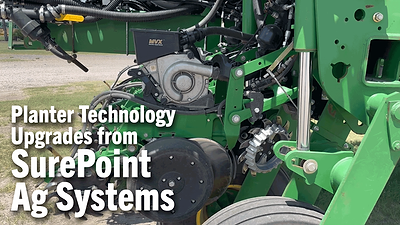Today’s agricultural tires resemble their predecessors in that they are still round and mainly made of rubber. Maintaining a tread and staying inflated may have been enough for years, but modern tire design parameters accounting for soil compaction, improved traction, tread wear, sidewall strength at super-low inflation rates and, increasingly, environmental concerns have permanently changed the way farm equipment engages the soil.
Tire evolution is still underway.
Smithers, a longtime global tire industry consultant, product tester and tire market watcher based in Akron, Ohio, says the next 20 years will usher in a number of what it calls “disruptive” tire technologies that are sure to continue the changes to “round and rubber” that farmers and ranchers and equipment manufacturers install on their equipment.
In a new report released in August, The Future of Disruptive Technologies in the Tire Industry to 2040, the multinational Smithers compiles results of a survey of technical experts, business leaders and opinion-making producers in the tire industry. The report outlines its “Top 20” innovations likely to further drive tire design changes in the face of demands from OEMs, regulators and driver/operators.
The report covers a wide variety of innovations from virtual design modeling to tire compound recipes and potential regulatory demands likely to be encountered over the next two decades.
Leading the list of change agents in tire design — for transportation, construction, mining and agriculture — Smithers says is continued development of advanced smart tires. “The adoption of enhanced sensor platforms (and likely continued miniaturization of sensors) will push the envelope for safety in (highway) driving, as well as providing critical maintenance and performance data for fleet manager.”
“Improved tire component composition will challenge natural rubber for its dominance across the tire industry…”
In the second spot, basic “smart tires” will continue to improve with their pressure monitoring systems integrated into various vehicles so that low pressure is not just detected, but corrected automatically on-the-go. On the farm, that could mean machine intelligence systems that could adjust tractor and implement tire pressures according to real-time soil conditions to address soil compaction issues. (See Ahead of the Curve, April/May 2020).
Improved tire component composition will challenge natural rubber for its dominance across the tire industry, says the Smithers report. Currently, Bridgestone has announced the development of a new elastomer product it says can have similar to superior performance traits than natural rubber in tire construction.
For years, petroleum-derived carbon black (produced from heavy compounds at the “bottom” of the basic oil fractionating process) has been a vital ingredient in tire manufacturing. The Smithers report sees technology moving toward what it calls “sustainably sourced” wood biomass to produce carbon black as tire makers seek ways to reduce the carbon footprint of their products.
The fifth technology Smithers says will change tires forever is the current development of non-pneumatic tires by many tire manufacturers. The report notes Michelin is set to introduce tires of this design for General Motors vehicles in 2024.
Other tire industry-changing innovations mentioned include self-healing polymers that respond to tire damage, similar to World War II’s wing-mounted self-sealing rubber aircraft fuel tanks. Recent research at Harvard describes a self-healing elastomer with a similar “toughness” as natural rubber that can “heal” to 30% of its original strength in 12 hours. Also, tire makers continue their quest to reduce chemicals in their compounds that increasingly draw the attention of regulators concerned with pollution from tire particles shed as a tire naturally wears.
Authors of the “disruptive report” say all of their top 20 innovation points will be refined and adopted over the next 20 years, and in the full report Smithers says it will include detailed scores for the disruptive potential currently, in 2030 and in 2040.
Company literature says the report likely will be of significant influence within the industry as tire manufacturers reappraise their research priorities in response to pandemic-induced business downturns of 2020.






